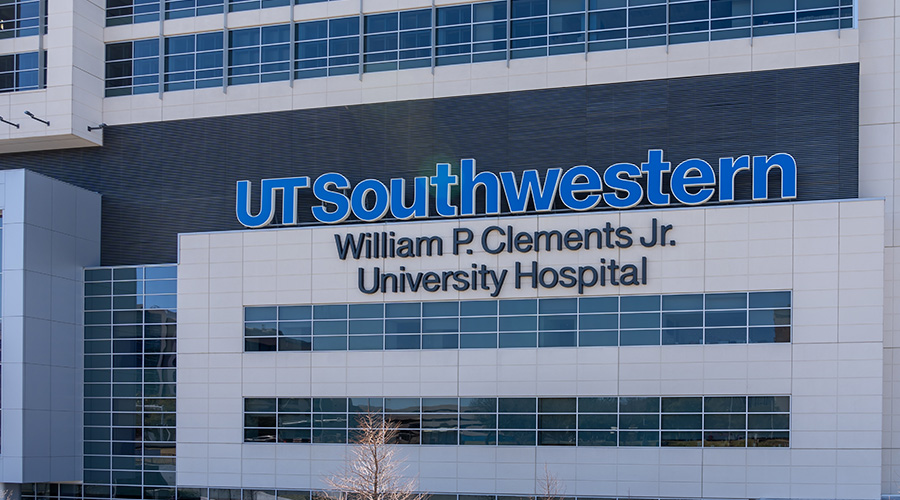An Inside Look at Fast-track Construction
Building health care facilities on a shorter schedule requires careful coordination to accommodate medical technologies
By Lenora Devine and Gary Buss
With a fast-track schedule, a new hospital can now be up and running in as little as 18 months, rather than the typical three years. That means quicker access to revenue streams, an improved image and better working conditions for employees. Appealing, right? But what about the technology that goes in that new building? More specifically, how does a fast-track schedule affect the technology planning process?
Technological advances are rolling out almost daily. The choices made during the rushed, fast-track construction time frame affect the organization’s ability to take advantage of technology. Will the effort needed to successfully do a fast track project be worth it?
Although an exact definition is still evolving, fast track construction is usually defined as the overlapping of functions and development stages to reduce the amount of time needed to complete a facility. Most construction projects follow a predetermined sequence: concept, schematic design, design development, construction documents, and construction administration. Fast-track construction overlaps these stages to allow construction to begin earlier and proceed at a faster pace. To accomplish this, there must be solid decision-making processes in place, open communication and an overall commitment to keep on task.
It’s imperative that every technological aspect of a facility be considered before the floor plans are finalized — from the type of equipment the facility will house, to the wiring and cable placement, to the possible creation of pathways for technology purchases that may be waiting for later capital funding.
Starting the Fast Track
The first step is to determine project scope — what type of construction is involved. The technology used in a specialty hospital, like a heart hospital, is different from that for a community hospital where bones are mended and babies are delivered. By focusing on a facility’s needs, the budget can be stretched and used toward purchases that suit specific service lines.
There are several issues to be considered during the concept phase. Who is the patient or customer? What is the budget? Is funding in place? Simply knowing how much money is allocated for technology provides planners with a starting point.
It’s also important to know the project time frame. Facility executives need to have answers to specific questions before going into the fast-track process: What services are being provided in this new facility? How many beds are licensed? What other ancillary services will be provided? What image does the facility want to portray?
For a fast-track schedule to work, facility executives should put together an internal multifunctional team to make decisions in a timely matter. The pressure will be on everyone involved to meet the desired completion date. Fast-track clients do not have the luxury of time when making critical equipment selections.
Key to the success of the fast-track construction of the new Methodist Mansfield Medical Center, in Mansfield, Texas, was the vision of the hospital owner. Officials for the Methodist Health System knew they wanted a state-of-the-art facility. To meet this goal, they opted to make the hospital all-digital. The facility was designed to support electronic medical records, a bedside medication verification system and advanced emergency services. Even high-end amenities such as flat screen televisions in patient rooms were included in the patient-centered design. A solid understanding of the vision for the hospital enabled the design team to move quickly while ensuring that the new facility would be able to accommodate the necessary technology.
To create a hospital design that realizes the vision for the facility, the project team must first become accustomed to how that particular hospital operates — its work flow. This will enable the team to predict how the new hospital system will operate. From there, the team develops a plan incorporating the preliminary wish list for services that are allocated through the design of space.
During the schematic design phase, medical equipment and systems planners take the preliminary space plan and add input based on their clients’ needs. For example, the plan may be to provide magnetic resonance imaging (MRI) services. On a fast-track schedule, the specific MRI product and vendor may be unknown during the schematic design phase, but the tight construction schedule can be adhered to by calculating the specifications for reinforced flooring — at least enough to hold an 18,000-pound piece of equipment.
This is one example of how fast-track schedules can move forward even without some final product decisions. Technology planners who know what’s going on in the industry and keep up with technological advances can help eliminate uncertainty about product choices.
To ensure everyone is aware of decisions and any changes, there must be open communication between all parties involved. For a fast-track process, construction meetings should already have begun during the schematic design phase — one step sooner than typical construction scheduling. Especially with a fast-track project, all parties involved should follow-up with documentation.
The Good Book
Time is money. With fast-track construction, this is particularly true. Subcontractor bidding has already begun on schematic design packages released by the architect during the design development phase. At this point, planners will have prepared the preliminary architecturally significant equipment (ASE) book. This bible of sorts will eventually be used by all parties involved in the construction.
Included in the ASE is a listing of all possible technologies for the project with specifications and costs, as well as space requirements for fixed and movable equipment. It also lays out exact recommendations for wiring and low voltage requirements needed in systems planning. This book becomes even more critical during the final construction inspection when the finalized version is used as a check-off list for technology purchases.
On some fast-track projects, construction sites may have already broken ground before the drawings are complete. Knowing the footprint of a structure is enough to speed the process, even if the project team has yet to finalize designs on the upper floors. It can be a risky venture, but one well worth the risk in terms of time saved.
Take the construction of the Center for Advanced Heart Care at the University of Kansas Hospital in Kansas City, Mo., for example. Administrators wanted fast-track construction on the grounds adjacent to their main hospital. Groundbreaking took place within three months from the time architects provided initial project designs. The project’s medical planners developed an initial equipment list based on that hospital’s departmental layout. The fast-track schedule made it critical to secure hospital input early on for fixed equipment. Fixed equipment purchases are those items built into the design, such as lights and booms in an operating room, or patient headwall units. Construction on infrastructure to house fixed equipment cannot begin without this purchase-specific information. Decision delays can put construction in limbo. Hospital administrators were pressed to make tough decisions early on. The payoff was a fast-track completion for a state-of-the-art heart hospital that now serves residents throughout the Midwest.
Anticipate Budget Implications
During the construction documents phase, drawings and specifications are being finalized. All aspects of engineering — structural, civil, mechanical and electrical — and architecture must work hand-in-hand. On the technology planning side, fast-track means vendor and equipment options must be narrowed down. It’s best to choose two or three vendors.
It should be clear at this point where the project lies in terms of budget, so it is a good time to make adjustments. Think ahead if it seems that certain equipment may land outside the budget. Even if the plan is to delay capital purchasing, include infrastructure and systems pathways in funding now for those eventual purchases. It’s easier to add equipment later if wiring pathways are already in place.
During the construction administration phase, technology plans are in place. At the building site, construction is in high gear. Months of tough decision-making have culminated in the completion of the ASE book. Procurement of technology has begun. Some equipment has been delivered and is being built into construction, while other items are warehoused.
The on-site delivery and staging of purchases is like a finely orchestrated symphony. Whether delivery is to be done by floor or all at once, plan with vendors and employees to ensure a smooth transition.
Once construction has ended, and with the ASE book in hand, walk through the facility to ensure all is as it should be. Internal training sessions might be in order for facility personnel.
Ultimately, the decision processes involved with any construction project are the same. Know the scope of the project, have decision makers in place and plan early for the future.
LeNora Devine is a medical equipment technology planner and Gary Buss is a systems designer with RTKL. Based in the firm’s Dallas office, RTKL’s health care technologies group, formerly known as EQ International, provides technology solutions to health care clients.
Related Topics:









